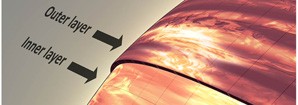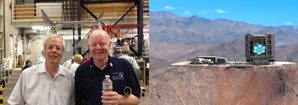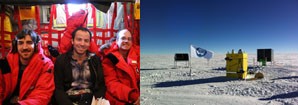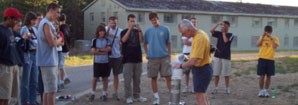Spotlight

UA College of Science Lecture Series Overview and Schedule
The tenth UA College of Science Lecture Series is about to begin. This year the topic is "Life in the Universe" and involves Stewardites Chris Impey and Laird Close, LPL-ites Tim Swindle and Dante Lauretta, Vatican-ite Guy Consolmagno, and Evolutionary Biology Professors Anna Dornhaus and Brian Enquist. All lectures are at 7pm, beginning Jan 26, in Centennial Hall.
For more information, look HERE and HERE. Watch the Kepler Orrery (confirmed exo-solar planets orbiting their stars to Wagner) HERE. While this series is happening, the Steward Monday Public Evening series found HERE is in abeyance.

Cloud and Weather Behavior on Brown Dwarfs
A group of scientists led by Daniel Apai, who holds a joint appointment at Steward and LPL, are observing brown dwarfs at several wavelengths to learn about the weather (akin to storms on the Sun's gas-giant planets) and clouds (akin to the belts and bands). Read about their project HERE, in an article written by David Flateau. Professor Apai also has a blog entitled Distant Earths.
Image: NASA/JPL-Caltech

University of Arizona Announces Large Gift to Giant Magellan Telescope
On Dec. 15, President Hart announced a $20 million gift from Astronomy Board Member Richard Caris. This generous contribution will help fund Steward and the Department of Astronomy’s contribution to the Giant Magellan Telescope project and secure the next generation of astronomical research excellence at the University of Arizona. This is a landmark gift from Richard, who has supported UA Astronomy for many years – his philanthropy has been significant for the Mirror Lab, Mt. Lemmon SkyCenter, and faculty research. More information will be added here in the next few days, including press releases. The Arizona Daily Star artcle can be found HERE. The UA press release can be found HERE. The GMTO press release can he found HERE. At this moment (Dec 27 and before) it's one of the four featured articles at www.arizona.edu.
Photo: Left: Roger Angel and Richard Caris (Credit: Sid Leach). Right: GMT artist's conception (Credit: Carnegie Institution for Science).

Arizona Daily Star article about Evan Schneider's research
Tom Beal of the Arizona Daily Star has published an article talking about Evan Schneider's research and research colloquium. Hit "go" for article.

Follow the Exploits of Craig Kulesa and David Lesser at Ridge A in Antarctica
A grad student at the University of New South Wales is part of a group working on the HEAT telescope in Antarctica. He's providing a blog for you to follow along as Craig Kulesa and David Lesser work on the telescope. The HEAT telescope is a collaboration of UA and UNSW, with principals Craig Kulesa and USNW's Dr. Michael Ashley.

Don McCarthy receives University Distinguished Outreach Faculty Award
We are very pleased to let you know that Don McCarthy has been selected this year for the University Distinguished Outreach Faculty award, the highest University honor in this area so central to our land-grant mission. On December 10 at the 17th Annual "Regent's Professor, University Distinguished Professors, University Distinguished Outreach Faculty" Induction Ceremony, the University will recognize Don and present him with a silver medallion. From the date of the ceremony onward, Don will hold the title of University Distinguished Outreach Professor, University of Arizona, in addition to his current title of Astronomer.
Congratulations Don
Pages

For Public
Public events include our Monday Night Lecture Series, world-reknowned Astronomy Camp and Mt Lemmon Sky Center.

For Students
A good place to start if you want to become an undergrad major or grad student, or need to find our schedule of classes.

For Scientists
Find telescopes and instruments, telescope time applications, staff and mountain contacts, and faculty and staff scientific interests.




